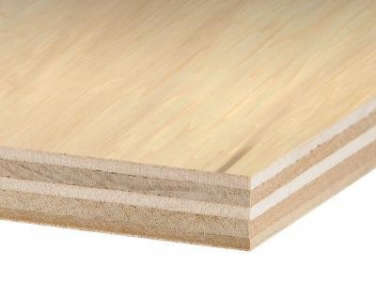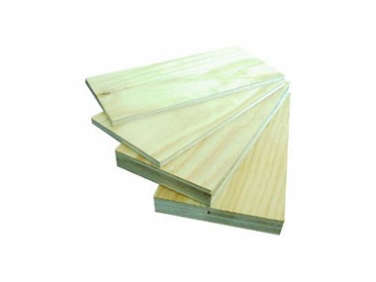It’s a fact: Here at Remodelista, we are partial to plywood, and it seems as though our readers are as well. And while our plywood posts are always very popular, we do get a fair share of comments from concerned readers about the detrimental effects of formaldehyde off-gassing in plywood, which naturally prompted us to find out more. Our research reveals some pleasant surprises.

How is plywood made?
Plywood is a manufactured wood panel that is made by gluing thin sheets of wood veneer together. The wood grain of each layer is rotated relative to the adjacent layers up to 90 degrees (cross-graining), providing the material with its strength and stability. Until a few years ago, the glue typically used in between the veneers of indoor plywood was a chemical resin called urea-formaldehyde, used for its high tensile strength, and from which harmful off-gassing would occur.

Why does formaldehyde come with a health warning?
Formaldehyde is a strong-smelling and colorless gas that induces both short-term and long-term health issues. The immediate effect of formaldehyde is that it can make you feel sick it if it is present in the air at levels higher than 100 parts per billion (ppb). A helpful comparator is that the average indoor formaldehyde level in most US homes today is typically around 25 parts per billion. Some people will experience sensitivity with lower levels than 100 ppb; symptoms typically include sore throats, coughing, scratchy eyes, and nosebleeds. Children and the elderly can be particularly sensitive to formaldehyde exposure.
Long-term exposure to high levels of formaldehyde, typically seen in workers in industries that make formaldehyde or formaldehyde-containing products (as well as lab technicians, some health care professionals, and funeral home employees), has been shown to cause cancer. The United States Environmental Protection Agency (EPA) lists formaldehyde as a “probable human carcinogen,” while the International Agency for Research on Cancer (IARC) classifies formaldehyde as “carcinogenic to humans.”

What does it mean for our homes and how can we protect ourselves?
According to the Center for Disease Control, “The issue of formaldehyde exposure in homes is long standing. Formaldehyde is frequently used in plywood, particle boards, fiberboard, resins, glues, and several other construction components, including the insulation of many homes.” With this in mind, formaldehyde in small concentrations is a normal part of our environment. While all homes have some level of formaldehyde (emissions are at their highest the first eight months after construction), the emissions decrease as the house ages. Mitigating factors that help to reduce emissions include keeping the temperature at the lowest comfortable level, ensuring good ventilation, and controlling the humidity in your home. Anyone concerned with the level of formaldehyde in their home can measure it with a formaldehyde test kit which can be found on the internet or by contacting someone in your area who conducts VOC (volatile organic compound) testing.
With increased awareness, the average level of formaldehyde emissions is on the wane and President Obama’s signing of the Formaldehyde Standards for Composite-Wood Products Act into law in 2010 continues the decline by establishing limits for formaldehyde emissions from composite wood materials. The most effective way to future proof your home from plywood off gassing is to source formaldehyde-free plywood.

Is formaldehyde-free plywood readily available?
Up until a few years ago, the standard advice for the formaldehyde wary was use an exterior-grade plywood for all projects, because the glue used in these plywoods is phenol formaldehyde, which off-gasses at a much lower level than urea formaldehyde. PureBond, one of the leading developers in the United States of formaldehyde-free plywood, uses a proprietary food-grade, soy adhesive that is also non-toxic, LEED green building certified, and competitively priced. Their product came to market in 2005, and by 2010, Home Depot was carrying it. Companies that specialize in environmentally friendly building materials like Green Depot are another good source.

What to know about living with formaldehyde in your environment:
- Until the relatively recent introduction of soy-based adhesives, all glue used in plywood contained formaldehyde–be it urea or the lower emitting phenol.
- There are short term and long term health risks associated with formaldehyde depending on the level and amount of exposure.
- Formaldehyde off-gasses over time and as a result, the older the plywood, the less of a health hazard it becomes.
- Formaldehyde in small concentrations is a normal part of our environment.
- The detrimental effects of formaldehyde can be mitigated by temperature, good ventiliation, and humidity control.
- The best way to keep formaldehyde levels at a minimum in your home is to use products that are formaldehyde-free.
Plywood is not just for walls and furniture; we also love the idea of using it as clever budget flooring. See 10 Favorites: The Unexpected Appeal of Plywood for other inventive ways of using it. If you are in the throes of remodeling or are thinking about it, you might find our Remodeling 101 series helpful.






Have a Question or Comment About This Post?
Join the conversation (8)